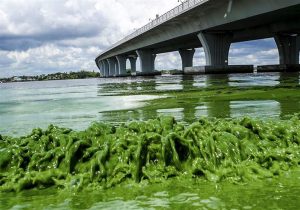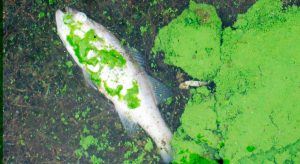THE ALGAL PHENOMENON- ALGAL BLOOM
- An algal bloom is single-celled also known as phytoplankton are tiny low and straightforward, free-floating tracheophyte which grow in either freshwater or saltwater.
- Algal blooms are sometimes called red tides which gives a tint to the water.
- However, the blooms are neither tidal nor exclusively red.
- Algae are the underside link of the organic phenomenon, and play a crucial role in any water ecosystem.
- The excessive amounts of algae can pose risks to the encircling plant and animal life still as humans who use the water for fishing or recreation.

ALGAE BLOOM CAUSES
- Algal blooms are caused due to the accumulation of algae in the freshwater or marine water bodies and is recognised by discolouration of water bodies by the pigments in algae.
- Due to its excessive growth, it blocks the pathways of sunlight reaching to other organisms and plants.
- It also causes depletion in oxygen levels for other species in water.
- They are occurred naturally and triggered by increased water temperature and sunlight that provide perfect growing conditions for the little plants.
- However, many scientific organizations, like the National Oceanic and Atmospheric Administration are now looking more closely at the kinds of the act that have contributed to the numerous increase in recent algae blooms.
- Among the causes for concern are nitrogen and phosphorus-rich fertilizers used on farm fields and residential landscaping.
- The Rain washes the fertilizers into water systems where they feed different species of algae.
- Wastewater from leaching septic systems and municipal sewage plants also release excess nutrients into waterways which will stimulate algal growth.
- Scientists with the international environmental organization, Sea Web, suspect temperature change also is also playing a task in algae blooms.
HARMFUL ALGAL BLOOMS/ CYANOPHYCEAN BLOOMS
- A cyanobacteria, or cyanobacteria bloom, is usually brought up as green algae. The thick, foamy blanket of algae poses health risks to humans and domestic pets.
- The toxin produced by these cyanobacteria is known as cyanotoxins which include highly potent neurologic, liver, and kidney toxins, including anatoxin, microcystins, and cylindrospermopsin.
- Blue-green algae blooms can cause skin irritations like blisters and hive
- The toxin produced by these cyanobacteria is known as cyanotoxins which include highly potent neurologic, liver, and kidney toxins, including anatoxin, microcystins, and cylindrospermopsin.
- Blue-green algae blooms can cause skin irritations like blisters and hive
- There are thousands of species of algae of which a comparatively small number of them release toxins that poison surrounding aquatic life.
- The excessive growth of those varieties is called harmful algal blooms.
- In some cases, the toxins from algae can cause organic phenomenon, killing turtles, dolphins and other animals that ingest the toxins directly or through intermediate species that take advantage of algae.
- Humans are susceptible to algal that collects in shellfish, like clams, mussels and scallops, harvested for commercial use.
- Infected shellfish can cause paralytic shellfish poisoning that affects the nervous system and may finish off breathing and lead to death.
- The water containing the algae is inhaled or swallowed, it can cause serious liver, kidney and neurological problems that may be deadly.
- Animals may also get exposed to these toxins during hot, dry summer months as it flourishes in small ponds where domestic animals drink which can be fatal.
ENVIRONMENTAL PROBLEMS
- Algae blooms also cause problems within an aquatic ecosystem.
- The Excessive growth of algae can block sunlight and stunt the expansion of other plants, which can provide important habitats for aquatic animals. Algae can also collect within the gills of fish and other animals and choke off their breathing.
- When significant algal blooms die and decompose, they’ll deplete most of the available oxygen within a locality or aquatic system making it uninhabitable for other varieties of life.

ECONOMIC CONSEQUENCES
- Science only recently began studying the causes and effects of algae blooms.
- While there’s still much to find out about the biological mechanisms, the economic consequences are clear.
- Commercial fishermen, shellfish harvesters, seafood dealers, and restaurants collectively lose voluminous dollars when algal blooms stop working fisheries.
- Tourism and recreational industries suffer when algal blooms on coastlines and lake shores keep people off from the water.
References